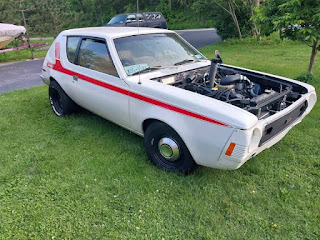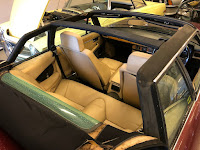Can you imagine being right all the time? Not only would you never learn anything, but no one would want to be around you. That's why, sometimes, I enjoy being wrong. It not only keeps me humble, but on occasion, I do appreciate the company of others. Being wrong always means I'm constantly learning. Example - the other day this bizarre looking 1960 Ford Fairlane popped up on Facebook Marketplace with a $16,000 asking price. "Good luck with that, pal", I chortled to myself but after I checked what it could be worth on Haggerty, turns out this may be priced right. I was wrong?! Imagine that.
No doubt the seller used Haggerty's online pricing tool to determine what they want for it. Haggerty says these things in "good condition" should or could go for $18,600 but that's one with Ford's 292 cubic-inch V-8. They suggest taking twenty percent off if the car has Ford's six-cylinder engine like this one has. It's also priced in line with what other 1960 Fairlanes in similar condition are going for these days on Marketplace.
Haggerty values these in "Concours" condition at more than $35,000. Frankly, although I'm a big fan of everything Haggerty, I find their online pricing guidelines extremely generous. Pie-In-The-Sky if you will. Might be great to help make the owner of a classic feel good about what they have, but when it comes time to sell, we need a more realistic gauge. Sellers sees what Haggerty says and can be resistant to drop the price on what they're selling to something that will get the car sold.
This car has been restored and there was considerable effort put into it. Trunk and floor pans are new, gas tank is new too. The interior has been redone but it's nowhere near factory spec, that's a big strike against it in my opinion. The paint job is not a factory color and it looks like it's on too thick as well. Strike two. The rims are cool but they look out of place on this, but I can deal with that. Again, this is a six-cylinder car and what's more, it has a column mounted, three-speed manual, the old three-on-the-tree. Brakes aren't boosted and there's no power steering. Strike three, four and five.
If the powerplant had been modernized, power brakes and steering installed it might increase its appeal. As it is, this thing is a handful to drive. I can just see lovers of mid-century aesthetic sprinting back to their late model Toyota after a test drive.
Speaking of aesthetics, there's also the issue of what you can't change about this car, it's somewhat off the wall styling. These cars ain't everyone's cup of coolant.
The design story of these 1960 big Fords is that when Ford Motor Company executives got wind of the new-for-1959 Chevrolet, they freaked out, trashed what they had planned to do for '59, worked around the clock and came up with this design that more than apes Chevrolet's "batwing" '59's. Problem was, they didn't get it online in time for the 1959 model year, so it had to wait until 1960.
Irony of ironies, the 1959 Chevrolet was part of General Motors' haphazard reboot after their suits lost their minds when they saw Chrysler's 1957 models. Eyes on your own paper, boys.
How much is something worth? Only what someone is willing to pay for it, naturally. Haggerty's generosity be darned. I don't know what price would help move this blue bomber but seeing it's been on Marketplace for forty-nine weeks and counting seems sixteen-large is way too much.
Hate to say I told you so.





















































